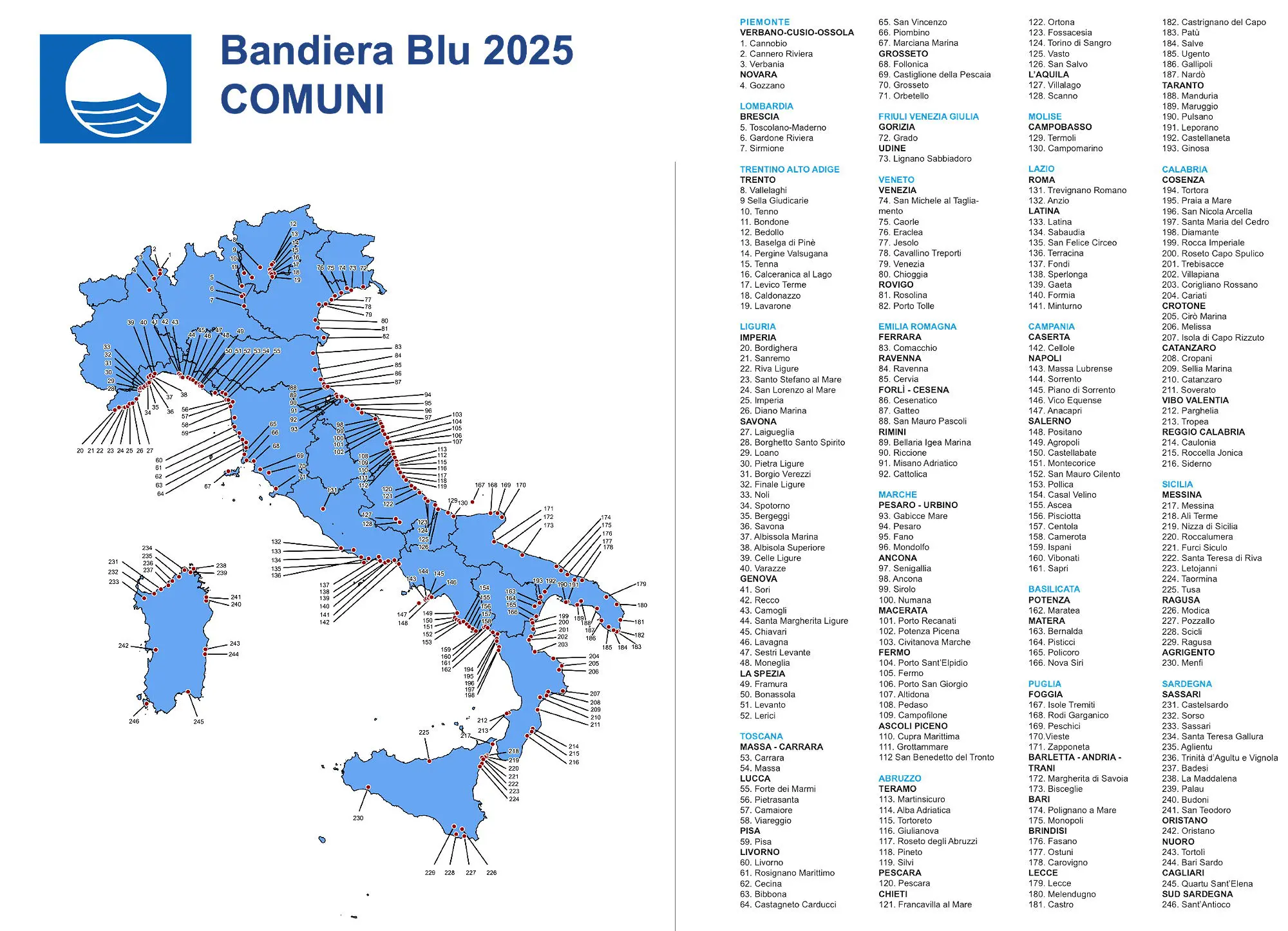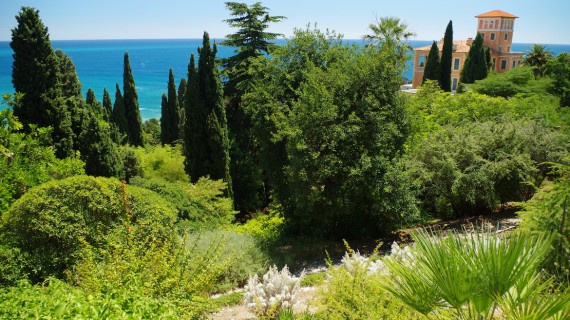Once again this year, the Blue Flags help us choose Italy‘s best beaches, not just for the beauty of the sea, but above all for their environmental commitment. The 39th edition has awarded as many as 246 locations and 487 Italian beaches from north to south, recognized for water quality, waste management, bike paths, accessible services, and—new in 2025—a concrete Sustainability Action Plan.
Liguria and Puglia on top, but the South surprises
Liguria confirms its status as the queen of clean seas, with 33 awarded locations. But Puglia also shines this year: 27 flags, including 3 new entries such as the stunning Margherita di Savoia. Keep an eye on Calabria, which surpasses Campania with 23 recognitions and continues its journey toward greener tourism.

The challenge is clear: a beautiful sea alone is not enough. A serious project, consistent commitment from local governments, and genuine care for both residents and visitors are essential.
This year’s Italy’s Blue Flag Beaches highlights
Fifteen new destinations have joined the Blue Flag circuit. Among the most interesting newcomers are San Teodoro in Sardinia, Formia in Lazio, and Marciana Marina in Tuscany, along with smaller virtuous towns like Torino di Sangro in Abruzzo. Five municipalities dropped out, including Capaccio Paestum in Campania and Ceriale in Liguria.
It’s important to note that the recognition does not apply to the entire municipality, but to individual beaches that meet 32 strict criteria updated yearly to ensure a complete and credible evaluation. These parameters range from water quality to health services, waste management to promotion of sustainable mobility, beach accessibility, and enhancement of natural areas.
The Sustainability Action Plan
The major innovation in 2025 is the requirement for municipalities to submit a Sustainability Action Plan. Each awarded location had to present a three-year project outlining strategies to tackle climate change, with clear goals aligned with the core themes of the 2030 Agenda: sustainable mobility, life below water and on land, resilient communities, and the fight against global warming.
The Plan thus becomes a key tool for maintaining Blue Flag status, which is no longer just a symbol to fly on the beach, but a concrete and ongoing commitment to the future. Local governments are expected to monitor progress, involve the community, and ensure an integrated approach to sustainability.
Sustainable tourism: a growing model
Blue Flags are not only a guarantee for travelers who care about sea quality, but also a compass for the development of truly sustainable tourism. Clean beaches, waste management, accessibility, bike paths, and efficient services are increasingly sought after by responsible tourists.
And that’s exactly the goal: to turn tourist destinations into virtuous examples, capable of combining natural beauty with environmental responsibility.
The 84 tourist marinas also awarded through the Fishing and Environment project, in collaboration with the Ministry of Agriculture, show how even ports are adopting eco-friendly practices, enhancing local traditions and reducing the environmental impact of boating activities.
Where to go to the beach in 2025? Follow the Blue Flags
The growth of Blue Flags in Italy is not just a source of pride: it signals that another kind of tourism is possible. For those who choose to travel sustainably, Blue Flag beaches offer a valuable guide—places where the environment comes first, and the future is already being built.
Looking for inspiration for your responsible beach holidays? The 487 Blue Flag Italy’s beaches in 2025 are a great place to start!




